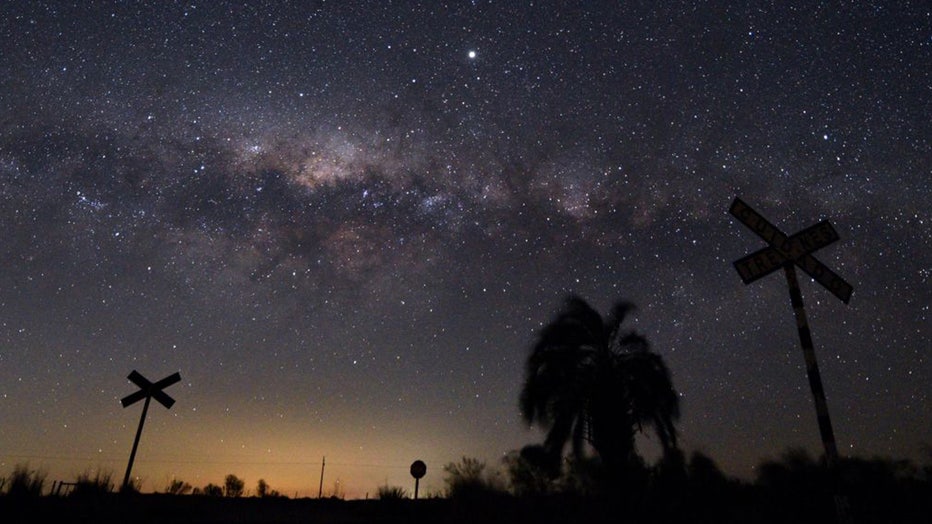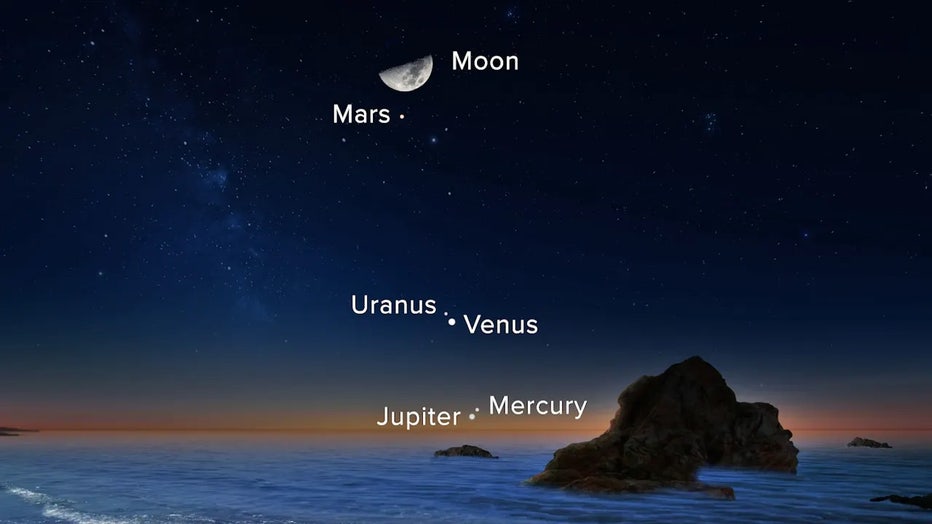How to see Mercury, Venus, Mars, Jupiter and Uranus at the same time

How and when to watch 5 planets align in the night sky this week
A planetary parade is expected after sunset on March 28 when Jupiter, Mercury, Venus, Uranus, Mars and the moon all align.
LOS ANGELES - A rare planetary alignment has arrived, and all you have to do to enjoy it is to know where and when to look.
Five planets – plus the moon – will all be visible in almost an arc shape as seen from Earth.
What is a planetary alignment?
A planetary alignment is the term for when several planets appear to form a line or cluster in the sky as seen from Earth.
Even though the planets could appear close, they are actually millions of miles away from each other. Jupiter, the fifth planet from the sun, is about 484 million miles from the giant star and just over 400 million miles away from Mercury.
Which planets will be visible and when?
Mercury, Venus, Mars, Jupiter and Uranus will all be visible during this planetary alignment period, according to Starwalk.space.
The best day to see these planets and the moon will be on March 28, but if you’ve got the right equipment, you’ll actually get to enjoy this celestial event after that, according to Rick Fienberg, senior contributing editor for Sky & Telescope and senior advisor to the American Astronomical Society.

FILE - The Milky Way's Galactic Centre and Jupiter (brightest spot at center top) are seen from the countryside near the small town of Reboledo, department of Florida, Uruguay, early on August 24, 2020. (MARIANA SUAREZ/AFP via Getty Images)
Location, location, location
Even though all five planets will be in the same area of the night sky, actually catching all five at the same time could prove challenging depending on where you’re located.
Jupiter and Mercury will appear very low in the west just after sunset, Fienberg told FOX TV Stations.
"Unless you have a clear sky and a nearly flat western horizon free of obstructions such as trees or buildings, you won’t see Jupiter and Mercury," Fienberg said.
However, if you do happen to have all of the aforementioned advantages, you could potentially see Jupiter and Mercury in addition to the other three planets using binoculars.
Jupiter will actually appear brighter than Mercury as well, Fienberg said.

The brightest planet out of the bunch will be Venus.
Venus will be higher in the sky to the upper left of Jupiter and Mercury and, this one, you can’t miss. Venus will appear brighter than any star and you won’t need any equipment to see it, Fienberg said.
The elusive Uranus might be a bit more difficult to find without visual aids, Fienberg advised.
Uranus will appear near Venus but it will be very faint. In fact, you’ll probably need a telescope just to distinguish it from surrounding stars.
And lastly, Mars will also appear very high in the southwest sky and it will have a noticeably orange hue.
"On the 28th the first quarter moon is above and to the left of Mars," Fienberg added.
Happy planet hunting!
This story was reported from Los Angeles. FOX Weather's Andrew Wulfeck contributed.

